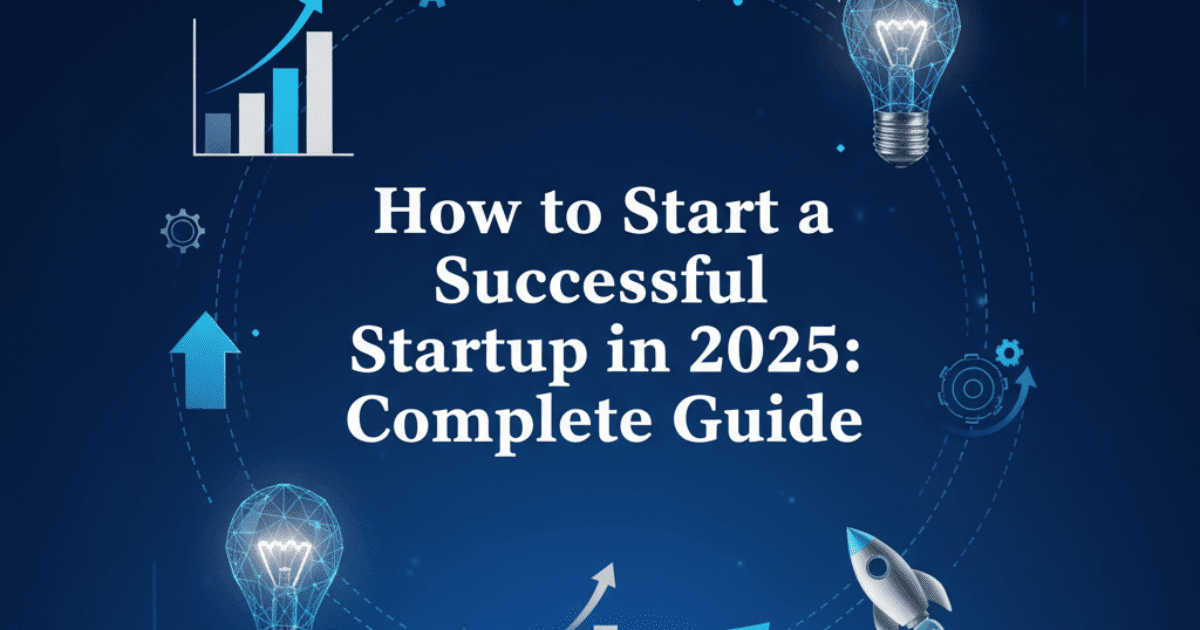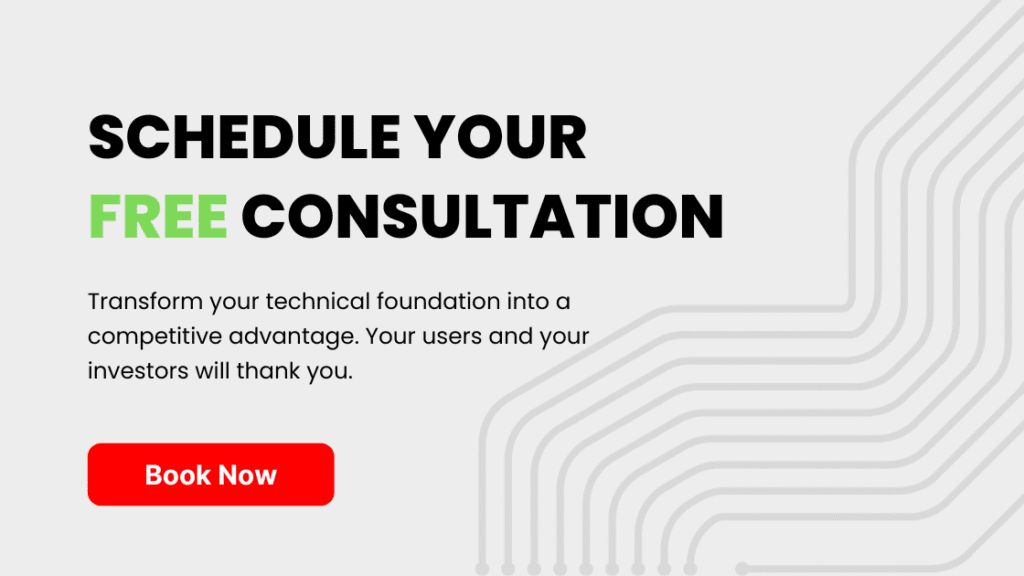Key Takeaways
- Knowing the startup timeline is key for big growth.
- A good timeline helps guide through growth stages.
- Getting the right money is a big step.
- Starting with a big idea and a small team is the first step.
- Expanding and hiring more is important for growth.
Launching a startup has never been more exciting—or more competitive—than it is in 2025. Whether you’re a first-time founder or a seasoned entrepreneur, knowing how to start a startup in 2025 requires more than just a great idea. You need a clear roadmap: from identifying real problems, validating solutions, building an MVP, and securing funding, to scaling sustainably.

This complete startup guide will walk you through every step, helping you avoid common pitfalls and set the foundation for long-term success.
1. From Idea to Founder-Market Fit
Identifying Real Problems
The best startups don’t start with a product; they start with a problem worth solving. Look at industries where customers face daily frustrations—healthcare, fintech, logistics, education. A great startup idea often emerges where inefficiencies are high and solutions are outdated.

Researching Trends & Pain Points
In 2025, emerging spaces like AI-driven automation, climate tech, and digital health are growing fast. Use tools like Google Trends, Statista, and industry reports to validate that demand is rising.
Aligning with Founder Skills
Success increases when your skills and passion align with the problem you’re solving. Investors call this founder-market fit—your unique background makes you the best person to solve this problem.
2. Validating Your Startup Idea
Market Research That Works
Skip assumptions—validate with customer interviews, surveys, and landing pages. Test demand before investing in development.
Competitive Analysis
Study your competitors:
- What are their strengths?
- Where are customers complaining?
These gaps may be your opportunity.
Minimum Validation Metrics
Look for sign-ups, pre-orders, or willingness to pay. In 2025, investors prefer data-backed validation over just pitch decks.
3. Building a Startup Roadmap
Business Model Canvas
Use the Lean Canvas to define your value proposition, customer segments, revenue streams, and cost structure. Keep it agile—your model will evolve.
Early Branding
Secure a domain, craft a name that’s memorable, and start with lightweight branding. Professional branding can follow once product-market fit is proven.
Legal & Compliance
Don’t ignore the basics:
- Register your business
- Protect intellectual property
- Ensure data protection (GDPR, CCPA, or local equivalents)
4. Developing Your MVP (Minimum Viable Product)
Focus on Core Value
An MVP should solve the primary customer pain point—nothing more. Strip out “nice-to-have” features.
Choosing a Team
Options include:
- Technical co-founder if you want long-term in-house control.
- Agencies or dev shops if speed is your priority.
- Freelancers if budget is limited.
Tech Stack in 2025
Popular stacks include MERN (MongoDB, Express, React, Node) and TALL (Tailwind, Alpine, Laravel, Livewire). Choose scalable, cost-effective technologies.
5. Attracting Early Adopters
Finding the Right Users
Look for communities already experiencing the pain you’re solving—forums, Reddit, LinkedIn groups, or niche Slack channels.
Launching to Communities
Platforms like Product Hunt and BetaList remain strong for reaching early adopters. Offer incentives like free trials or lifetime deals.
Feedback Loops
Use tools like Hotjar or Mixpanel to track how users interact. Iterate fast—early adopters expect improvements.
6. Crafting Your Launch Strategy
Go-to-Market Approach
Decide between:
- Soft launch (limited beta, refine before public launch)
- Hard launch (public push with marketing campaigns)
Channels That Work in 2025
- Organic SEO and content marketing
- Paid ads (Google, LinkedIn, niche platforms)
- Influencer and micro-influencer partnerships
- PR campaigns with credible industry blogs
Measuring Launch Success
Track metrics like activation rate, churn rate, cost per acquisition (CPA), and customer lifetime value (LTV).
7. Funding Your Startup
Bootstrapping vs Investors
- Bootstrapping gives control but limits speed.
- Angel investors provide funding plus mentorship.
- Venture capital suits startups aiming for hyper-growth.
💡 According to Crunchbase, global VC funding reached over $250 billion in 2024, with AI, climate tech, and healthcare among the top-funded sectors.
Pitching in 2025
Investors want more than vision:
- Evidence of traction (users, revenue, engagement)
- Clear path to profitability
- Scalable model
Managing Finances
Set clear KPIs: burn rate, runway, and break-even projections. Poor cash management kills startups faster than competition.
8. Scaling Your Startup
Scaling Product & Infrastructure
Use cloud-native solutions like AWS or Google Cloud for seamless scaling. Implement DevOps for faster releases.
Scaling Your Team
Hire slowly, focusing on culture fit and adaptability. Remote-first hiring widens your talent pool.
Scaling Marketing & Sales
Move from organic growth to structured sales funnels, referral programs, and partnerships.
9. Common Startup Challenges & How to Overcome Them
- Founder burnout: Protect your mental health; delegate effectively.
- Team conflicts: Use clear roles and equity agreements.
- Legal issues: Stay updated on local compliance rules.
- When to pivot: Watch metrics—if retention is low despite product improvements, pivot before resources drain.
10. Long-Term Strategy & Exit Planning
Continuous Improvement
Always listen to customers and iterate. A good startup never stops evolving.
Scaling Operations
Automate finance, HR, and customer support with SaaS tools to maintain agility.
Exit Options
- Acquisition: attractive to larger companies in your space.
- IPO: long, costly, but rewarding if growth is exponential.
- Sustainable growth: some founders prefer building a long-lasting independent company.
Ready to Bring Your Startup Idea to Life?
At Kinetik Dynamics, we help founders turn bold ideas into scalable products. Whether you need an MVP, a custom platform, or ongoing technical support, our expert team is here to guide you through every stage of the startup journey.

👉 Book a free discovery call with our team today and see how we can help you launch faster, smarter, and with confidence.
Frequently Asked Questions (FAQ)
1. How much money do I need to start a startup in 2025?
It depends on your business model. A lean tech startup can begin with as little as $5,000–$15,000 for an MVP, while more complex products may require $50,000 or more.
2. What is the first step in starting a startup?
The first step is validating a real problem. Talk to potential customers, confirm demand, and ensure the problem is significant enough to solve.
3. Do I need a co-founder?
Not always. Many solo founders succeed, but a co-founder can complement your skills and share the workload. If you lack technical expertise, a technical co-founder or agency can be invaluable.
4. How long does it take to build an MVP?
A simple MVP can take 6–12 weeks if focused on core features. Larger or more complex builds may take several months.
5. What are the most common reasons startups fail?
The biggest reasons are lack of market need, poor cash management, weak teams, and failure to adapt. A strong validation process and agile mindset can reduce these risks.
